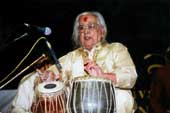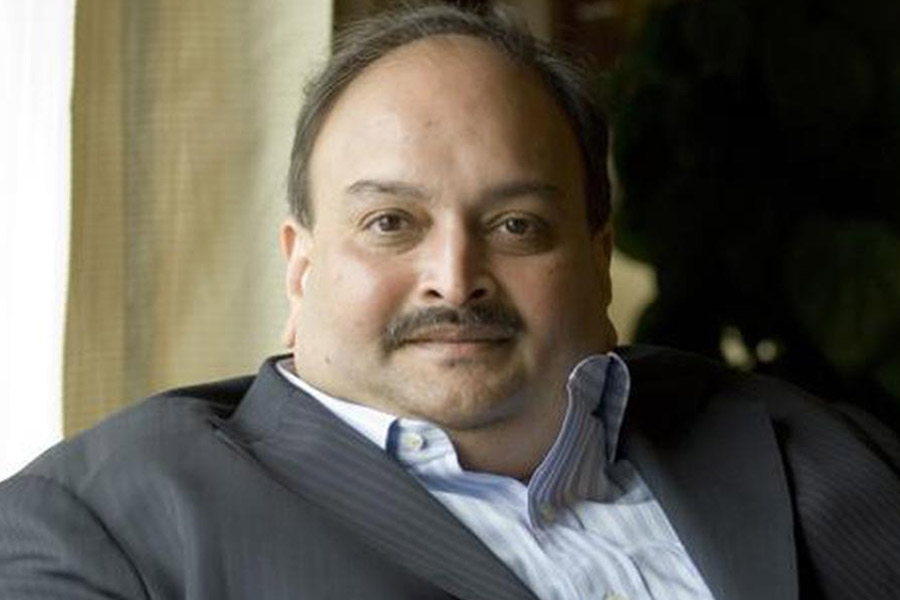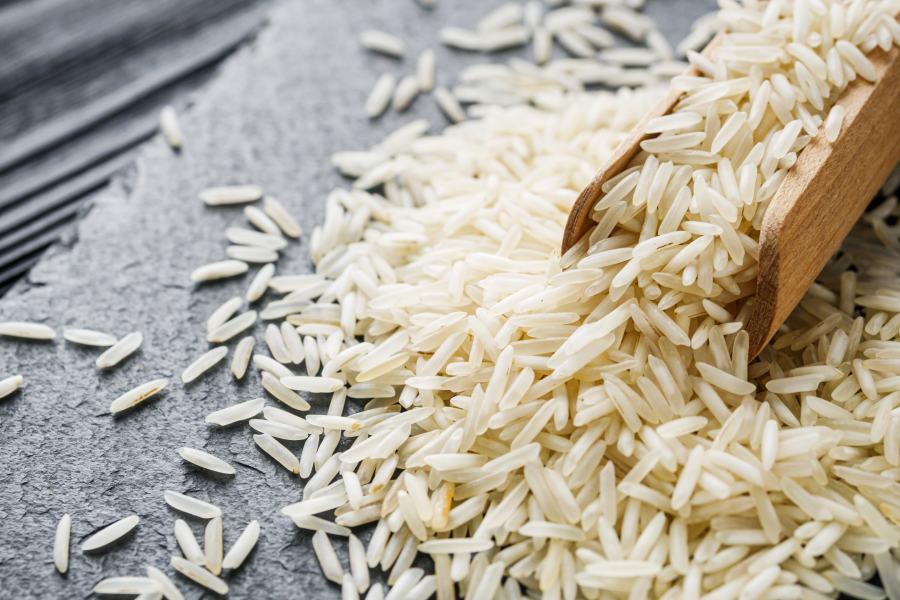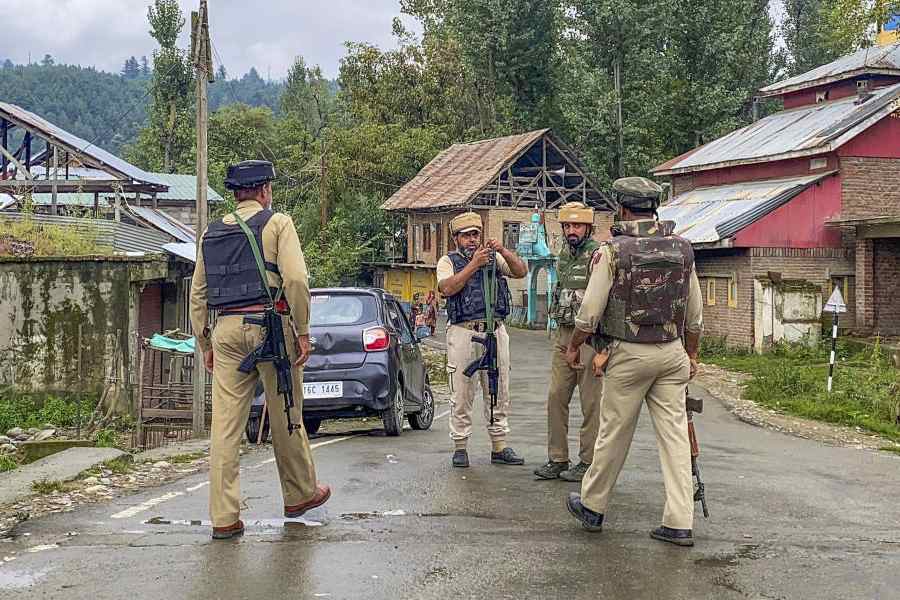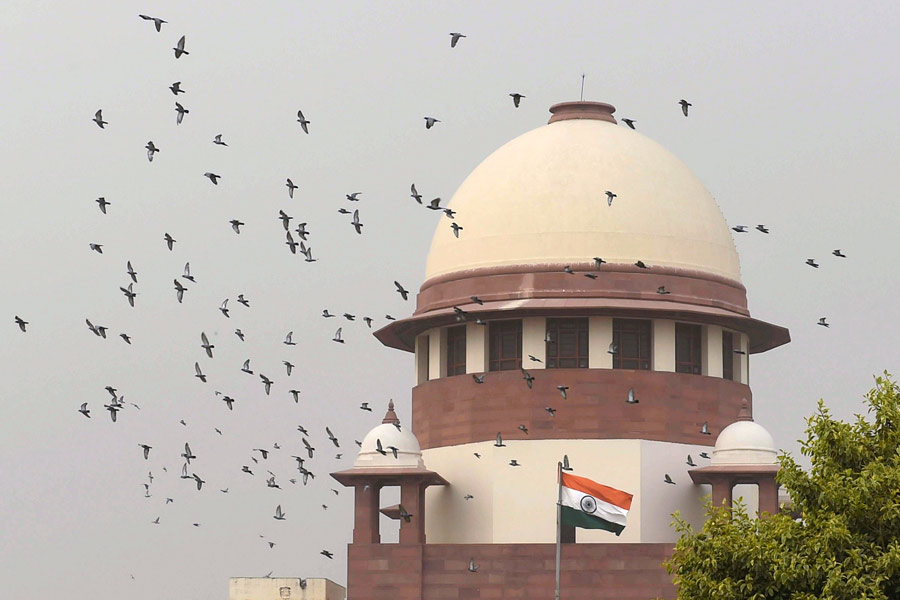 |
| Mythological episodes: Santhali patachitra by Anwar Chitrakar |
In the early 20th century, when Calcutta’s art market was briefly aflush with an urbanised variety of pata paintings, the bulk of them quickly found their way into the private collections of Western tourists who had the eye to perceive the beauty of Kalighat patas. Indians of the time, like the predecessors of an earlier era who also saw a large variety of exquisitely done miniatures being carried home by enthusiastic outsiders, did not think the low-priced patas worth collecting. It is quite possible that the other kind of patas, still available in plenty from the village artists of Midnapore, Birbhum and Bankura, will meet with the same fate before long.
It is against this backdrop that the current exhibition, ‘Chitrakarer Chitrakala’, showcasing the works of the young but amazingly accomplished folk painter Anwar Chitrakar assumes significance. The display of his works is divided by Gallery Kanishka into the three major forms of patachitras — the Midnapore pata, the Santhal pata and the Kalighat pata. Of particular interest are the patas depicting in a stylised manner mythological episodes, village vignettes, folktales and rituals.
It is doubtful, however, to what extent Anwar’s zealous effort to revive the Kalighat patachitra, by way of reproducing available prints and originals, will serve any purpose. It might be worth his while to make innovative excursions into the living pictorial-oral traditions of the Midnapore patachitra.
A group of ex-students of Rabindra Bharati, including both painters and sculptors, recently mounted their work at the Birla Academy of Art and Culture under the title ‘A Path’, an appellation that seems to carry no particular significance. The quality of their output, singly as well as well collectively, did, however, speak well of their individual excellence. Sudipta Basu Roy Chowdhury’s inverted Ravana was neatly composed and evocative, while Tutu Sarkar’s mixed-media composition, Light and Shade, was embellished with a lavish spread of blue on the former’s colour scheme involving yellow, orange, red and black. More strictly representational, Debika Mukherjee’s Lonely Tree, and a flower-decked head of a woman (both in oil) showed her command of her chosen medium. Dipak Kundu and Barun Roy evinced their preference for narrative depiction of human forms in action. Utpal Naskar, still a final-year BFA student, has proved his mettle in his sculptural pieces. Of some significance are the pieces titled Flowers and Seller, both in iron.
Six young painters, as varied in their aesthetic approaches as blue, green, red and grey, recently mounted their works at the Birla Academy of Art and Culture. The themes range from Atin Mitra’s Indian-style painting of an idyllic waterscape embellished by two contemplative lake birds, surrounded by lotus leaves and blooms, to Sanjoy Patra’s strikingly urban pictorial construct involving cityscapes. In between, Basudev Ghosh’s depiction of a tempestuous sea and Swarup Nandy’s neatly fashioned colour-lithoprints and Avijit Mukherjee’s mixed iconic pictures take their place beside Palash Paul’s realistic depictions of a roadside tea stall abuzz around a steaming kettle or the face of the busy tea-vending woman shrouded in white vapour. What stood out at the show was the technical virtuosity and clarity of expression of the individual artists.

